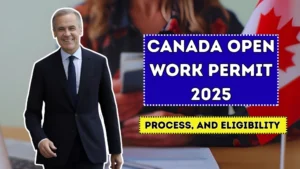Canada’s Open Work Permit program is changing in 2025. New rules are coming in, but there are new options being introduced for foreign nationals looking for flexible employment. Dependent children will no longer qualify for open work permits starting January 21, 2025. Permits will only be issued to spouses of select international students and highly skilled foreign workers. For those planning to work in Canada and are looking for flexible employment options, it is important to understand the changes and work around them.
Major Policy Changes Taking Effect!
The most notable change in the pre-2025 family-based open work permit policy windows is January 2025. Applications submitted prior to January 21, 2025, will still be evaluated based on the previous criteria, which grants a temporary advantage to those already in the application backlog. New applicants, however, are required to meet the new spouse of qualified applicants and international students in particular programs.
The wait is finally over. Starting October 2025, spouses and common-law partners of all open work permit holders, including those in low-wage occupations, will be eligible for Open Work Permit. This change is a sign of Canada’s devotion to family reunification and also needs in diverse labor sectors.
Eligibility Criteria for 2025
The new structure highlights important eligibility categories. Entitled groups are spouses of skilled workers, students, recent graduates, and those applying for permanent residency. Most notably, there are no job offer requirements, and no LMIA needs to be submitted which makes this one of the easiest pathways to Canadian work.
Post-Graduation Work Permit applicants who are recent graduates of Canadian Designated Learning Institutions (DLI) are no longer required to submit proof of graduation as long as coursework is completed and grades are submitted. This change to the system helps minimize red tape for graduates who want to start working.
Application Procedure and Required Documents!
The primary method of applying for TR and PR remains through the IRCC portal, where they must create accounts and submit open work permit applications including corroborative documents like passport copies and photos. For spousal applications, marriage certificates and proof of relationship documents are required.
Healthcare and education professionals are now prioritized for targeted sector border-less job applications. Applications from specialized fields such as Nursing, Elder care, Early Childhood education, and Skilled trades are receiving priority processing and are estimated to be finalized within 30 days.
Costs and How Long they Take
It is very important to understand what costs will be involved in planning an application. A case will be charged CAD 155forthepermit,CAD100 for an open work authorization, and CAD $85 for biometrics, if needed. Processing times usually take around 6 to 10 weeks, depending on the client’s country and the complexity of the case.
Next Steps After Accetance!
Receiving a Letter of Introduction means the application is approved and, upon arriving in Canada, the traveler presents the letter to a border officer who will then issue a work permit. This provides instant access to employment in the majority of Canadian businesses throughout the provinces and territories.
The 2025 changes to Canada’s Open Work Permit Program are an example of the country’s shifting immigration system, blending family immigration and economic immigration. With the recent policy changes that make Canada more welcoming to spouses, students, and permanent residency applicants, now is a great time to prepare and apply. Success in these cases is obtained through the careful and precise application of strategy, and the correct paperwork depending on the category of eligibility.




